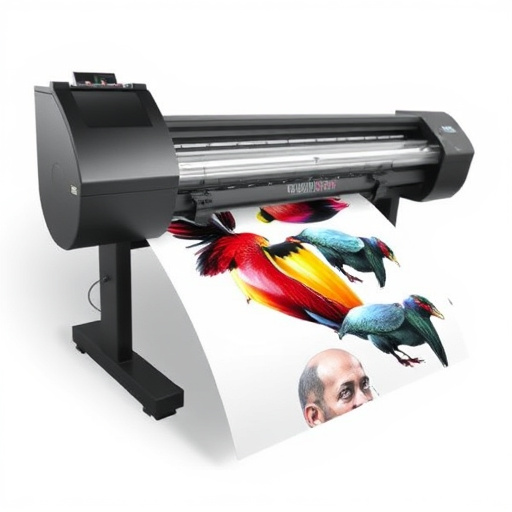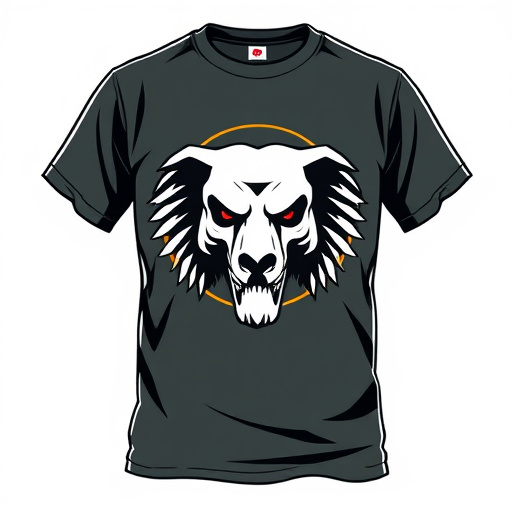The rapid DTF Industry Growth demands marketing evolution. Marketers adapt to digital revolution, shifting from traditional to personalized content & experiences via direct-to-consumer channels and user-generated content. Emphasis on DTF printing benefits drives brand loyalty. Digital innovations, online platforms, and data analytics crucial for reaching tech-savvy consumers in competitive market.
As the DTF (Demand-to-Fulfillment) industry experiences rapid growth, marketing strategies must evolve to keep pace. This article explores how businesses are navigating this dynamic landscape by understanding the profound impact of DTF expansion on consumer behavior and market trends. We delve into shifting strategies, emphasizing adaptability in a fast-changing environment. Additionally, we highlight the crucial role of digital innovations in sustaining success within this thriving industry.
- Understanding the Impact of DTF Growth on Marketing
- Shifting Strategies: Adapting to the New Market Dynamics
- Embracing Digital Innovations for Sustainable Success
Understanding the Impact of DTF Growth on Marketing

As the DTF Industry Growth accelerates, marketing strategies must evolve to keep pace with this dynamic shift. The rise of direct-to-film (DTF) technologies has transformed how businesses approach product customization and consumer engagement. Marketers now face the challenge and opportunity of navigating a landscape where personalized, on-demand merchandise is just a click away. This rapid growth means that traditional marketing tactics may no longer resonate effectively with audiences who are accustomed to instant gratification and highly tailored experiences.
Understanding this impact is crucial for businesses looking to thrive in the current market. With custom DTF transfers becoming increasingly accessible, marketers must adapt by focusing on creating unique, personalized content and offering experiences that reflect the same level of customization. Engaging consumers through direct-to-consumer channels and leveraging user-generated content can help brands stay relevant and build a strong connection with their audience in this evolving industry.
Shifting Strategies: Adapting to the New Market Dynamics

As the DTF Industry Growth accelerates, marketing strategies are undergoing a significant metamorphosis. The rapid evolution of digital technologies has reshaped consumer behavior and expectations, demanding dynamic adaptations from businesses. Marketers can no longer rely on traditional approaches; instead, they must embrace innovative tactics that align with this new, fast-paced market reality.
This shift is particularly evident in the apparel industry, where DTF (Direct to Fabric) printing for light fabrics has become a game-changer. The best DTF printer technologies enable brands to offer personalized, on-demand designs with unparalleled speed and efficiency. Marketing efforts now focus on highlighting these benefits, showcasing the ease and convenience of custom fabric printing for consumers. Strategies involve direct engagement through social media, leveraging user-generated content, and strategic collaborations with influencers to create a buzz around DTF for apparel, thereby driving market adoption and fostering brand loyalty.
Embracing Digital Innovations for Sustainable Success

In the fast-paced realm of DTF Industry Growth, marketing strategies must evolve to keep pace with innovative technologies and shifting consumer behaviors. Embracing digital innovations is no longer an option but a necessity for sustainable success in this dynamic landscape. Marketers are increasingly leveraging online platforms, social media, and data analytics to connect with their target audience more effectively.
For instance, the rise of direct-to-garment (DTF) printing technologies has revolutionized the custom t-shirt industry. DTF printers allow for intricate designs, vibrant colors, and on-demand production, appealing to both businesses and individuals looking to express their unique identities. Marketers who adapt to this trend by integrating digital marketing strategies—such as visually captivating content, targeted social media campaigns, and personalized customer experiences—will be better positioned to capture the attention of a tech-savvy generation and thrive in the competitive DTF market.
As the DTF Industry Growth accelerates, marketing strategies must evolve to keep pace. Understanding the impact of this rapid expansion and embracing digital innovations are no longer optional; they’re essential for navigating the new market dynamics. Shifting from traditional approaches to adaptive, data-driven tactics is crucial for sustained success in this dynamic landscape. By leveraging digital tools and staying attuned to consumer changes, businesses can ensure their marketing efforts remain relevant, engaging, and ultimately, successful.














